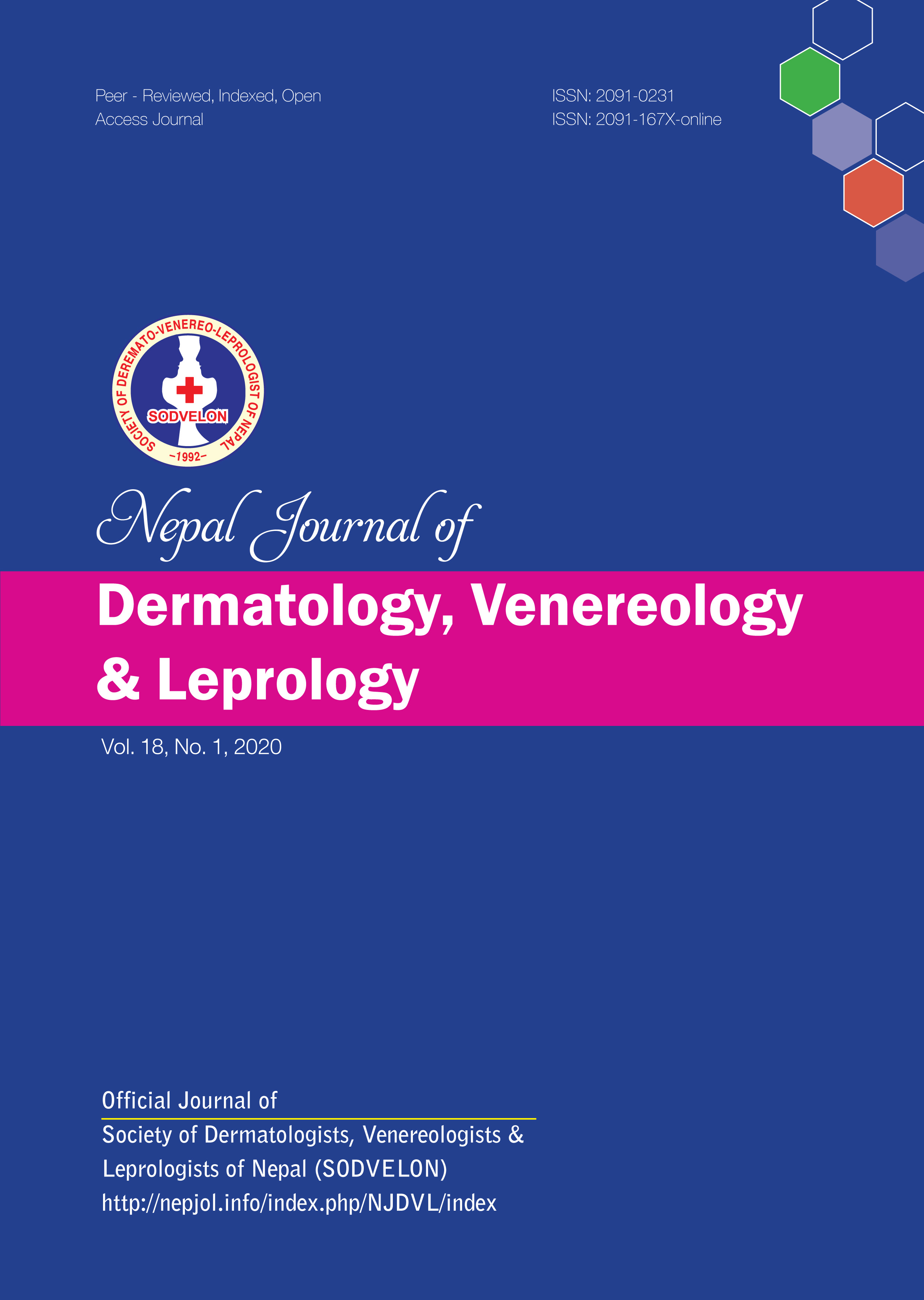Quality Of Life In Patients With Chronic Dermatophytosis
DOI:
https://doi.org/10.3126/njdvl.v18i1.27249Keywords:
Antifungal Agents, Dermatology, Pruritus, Quality of LifeAbstract
Introduction: The term “chronic dermatophytosis” can be described as patients who have suffered tinea infections for more than 6 months, with or without recurrence. Since last few years we are facing an onslaught of chronic and recurrent dermatophytosis. These infections are increasingly becoming debilitating with severe symptoms like itching and increasingly showing lack of response to traditional treatment, hence it has become utmost important to assess impact of dermatophytosis today on quality of life of patients.
Objectives: To determine quality of life in patients with chronic dermatophytosis using Dermatology Life Quality Index (DLQI).
Materials and Methods: Adult literate patients having chronic dermatophytosis which was confirmed by KOH mount were included in the study. History, clinical features and other relevant details were included in a proforma. All patients were asked to fill DLQI questionnaire in Hindi. Controls having disease for less than six months were also included. Data thus obtained was collected and tabulated. The data was analysed using SPSS software and relevant statistical tests were used.
Results: Total number of cases collected were 263, 137 controls were also included. In gender distribution, cases had 71.86% males and 28.14% female while controls had 63.5% males and 36.5% females. Mean DLQI of cases was 14.28+/-5.16 and controls was 11.56+/-3.60. DLQI distribution of cases -162(61.6%) had very large effect, 64(24.33%) had moderate effect, and 32(12.17%) had extremely large effect on DLQI. Domains of Symptoms and feelings (72.67%), work and school related activities (69%) and treatment related problems (67.67%) posed maximum impairment. Quality of life derangement increased significantly with presence of lesions on both exposed and non exposed sites and increase in body surface area.
Conclusion: While superficial dermatophytosis affects quality of life (QoL) in all patients, chronic dermatophytosis has a significantly more derogatory effect on the QoL of a person with some of the patient also showing extremely large effect on QoL.
Downloads
Downloads
Published
How to Cite
Issue
Section
License
Copyright on any research article is transferred in full to Nepal Journal of Dermatology, Venereology & Leprology upon publication. The copyright transfer includes the right to reproduce and distribute the article in any form of reproduction (printing, electronic media or any other form).




